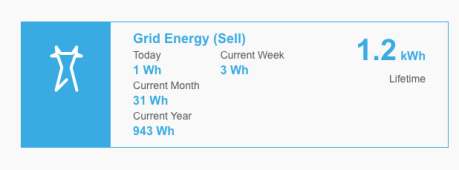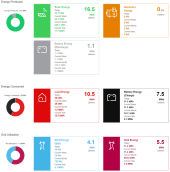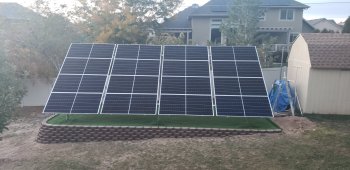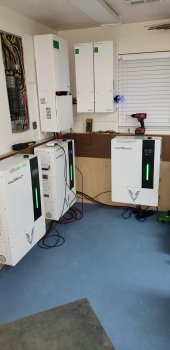JBertok
Network Engineer
I have a pair of XW Pro 6848 in sync with the whole house on their load side.
The desire is to power the loads with prioritized available DC, and use the grid to make up the difference when batteries fall below Grid-Support voltage.
It is desired to have zero draw from the grid (AC1) when DC is available and to never back-feed to the grid.
Schneider calls this running in "Self-Consumption" mode.
The XWs are configured with the following settings:
- GRID SUPPORT is "Enabled" on both
- MAXIMUM EXPORT SELL AMPS that's supposed to throttle all export is set to "0" on both
- SELL ENABLED/DISABLE is set to "Disabled" on both
- CHARGER set to DISABLED to prevent battery charging from grid on both
- BACKUP MODE for gid-forming is set to "Enabled" on both
Any time DC voltage is high enough to enable grid support, the XWs always draw between 100 and 200 watts from the grid. It never sits at zero.
They don't seem to be able to independently regulate both phases of the output to independently reach "zero" on each leg. The result is perpetual mis-handling of export. This is a big deal since exporting without utility blessings can trigger some nasty-grams from code-enforcement.
Here are some screen shots depicting what I'm talking about:
1. despite my export being set to "0" and Sell disabled, that is apparently not enough to prevent actual export (AC L1 Current)

2. Grid current is NEVER zero. It's always taking 100-200 watts, but what's worse is that it often spikes to 700+ watts of export depending on loads:
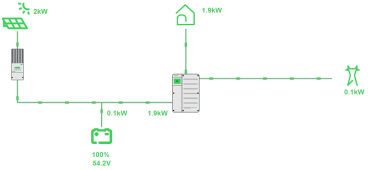
3. Sell is set to disabled and Export current set to a maximum allowable amperage of 0.0, these number should never grow. but they always do:
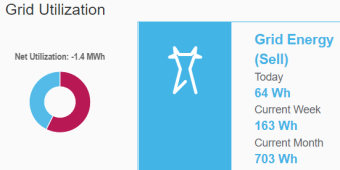
Based on my understanding of the architecture of the XW's block-diagram and principles, I imagine only two possible solutions to the problem:
A. Run all loads through a 240-240/120 center tapped transformer
B. Take the XWs off-grid and use an external battery charger
Either option would be expensive in both cost and power efficiency. Anyone got a better trick up their sleeve?
The desire is to power the loads with prioritized available DC, and use the grid to make up the difference when batteries fall below Grid-Support voltage.
It is desired to have zero draw from the grid (AC1) when DC is available and to never back-feed to the grid.
Schneider calls this running in "Self-Consumption" mode.
The XWs are configured with the following settings:
- GRID SUPPORT is "Enabled" on both
- MAXIMUM EXPORT SELL AMPS that's supposed to throttle all export is set to "0" on both
- SELL ENABLED/DISABLE is set to "Disabled" on both
- CHARGER set to DISABLED to prevent battery charging from grid on both
- BACKUP MODE for gid-forming is set to "Enabled" on both
Any time DC voltage is high enough to enable grid support, the XWs always draw between 100 and 200 watts from the grid. It never sits at zero.
They don't seem to be able to independently regulate both phases of the output to independently reach "zero" on each leg. The result is perpetual mis-handling of export. This is a big deal since exporting without utility blessings can trigger some nasty-grams from code-enforcement.
Here are some screen shots depicting what I'm talking about:
1. despite my export being set to "0" and Sell disabled, that is apparently not enough to prevent actual export (AC L1 Current)

2. Grid current is NEVER zero. It's always taking 100-200 watts, but what's worse is that it often spikes to 700+ watts of export depending on loads:

3. Sell is set to disabled and Export current set to a maximum allowable amperage of 0.0, these number should never grow. but they always do:

Based on my understanding of the architecture of the XW's block-diagram and principles, I imagine only two possible solutions to the problem:
A. Run all loads through a 240-240/120 center tapped transformer
B. Take the XWs off-grid and use an external battery charger
Either option would be expensive in both cost and power efficiency. Anyone got a better trick up their sleeve?



